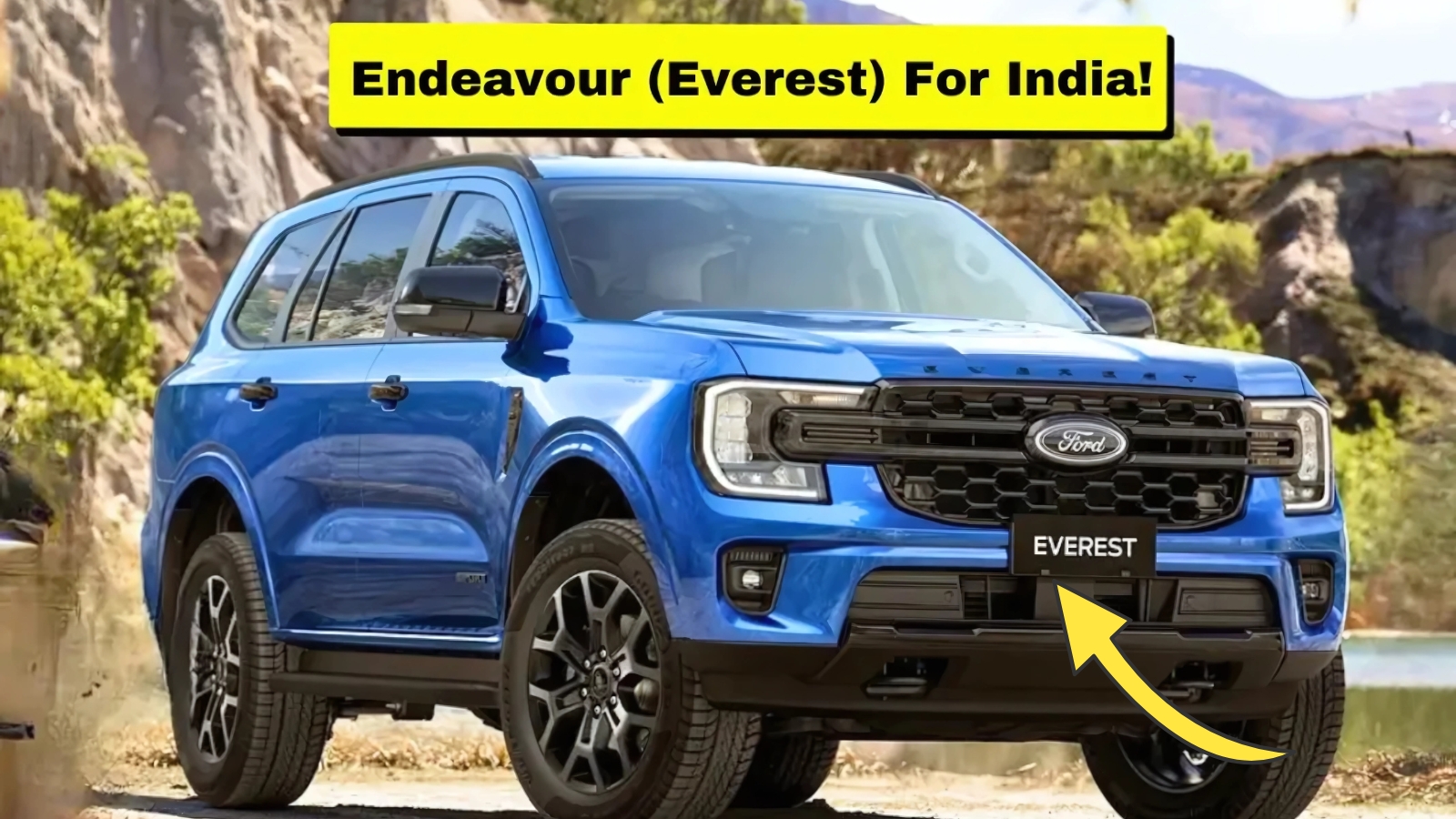Ford Endeavour 2025: The automotive world loves a good comeback story, and Ford’s anticipated return to India with the Endeavour – now rebranded as the Ford Everest – promises to be one for the ages. After pulling out of the Indian market in 2021, Ford is plotting a strategic re-entry that could reshape the premium SUV landscape. With whispers of a late 2025 or early 2026 launch, the new Everest isn’t just another SUV – it’s Ford’s declaration that they’re back to reclaim lost ground.
The Name Game: From Endeavour to Everest
Ford’s decision to rebrand the Endeavour as the Everest in India marks a significant shift in strategy. The name change aligns with Ford’s global nomenclature, where the SUV has been known as the Everest in most international markets. This isn’t merely cosmetic – it represents Ford’s commitment to creating a unified global brand identity while avoiding potential trademark issues that plagued the Endeavour name in India.
The new Everest maintains the robust DNA of its predecessor while incorporating modern design elements that make it instantly recognizable. The distinctive C-shaped LED DRLs and the twin-slat front grille give it a commanding presence, while the overall design language speaks of maturity and sophistication. At 4,914mm in length and built on a 40mm longer wheelbase than the previous generation, the Everest promises to be more spacious and imposing than ever before.
Engineering Marvel: The Heart of the Beast
Under the hood, the Ford Everest is set to offer two compelling engine options that could redefine performance expectations in the premium SUV segment. The standard offering will likely be a 2.0-litre bi-turbo diesel engine, already manufactured at Ford’s Sanand facility in Gujarat for export markets. This powerplant represents proven technology with the potential for local assembly, keeping costs relatively manageable.
However, the real game-changer could be the optional 3.0-litre V6 diesel engine, known internally as the “Lion.” This powerhouse produces 250hp at 3,250rpm and an impressive 600Nm of torque between 1,750-2,250rpm. Currently manufactured at Ford’s Struandale Engine Plant in South Africa, this engine has proven its mettle in markets like Australia, where it powers both the Everest and the Ranger pickup truck. The V6 engine’s inclusion would give Ford a significant advantage over competitors, offering a level of refinement and power that few rivals can match.

Technology and Luxury: Premium Redefined
Step inside the new Everest, and you’re greeted by a cabin that rivals luxury sedans in terms of sophistication. The interior features a modern dashboard dominated by a portrait-oriented 12-inch touchscreen running Ford’s latest SYNC infotainment software, complemented by a 12.4-inch digital instrument cluster. The premium experience extends to Bang & Olufsen’s 12-speaker sound system, ensuring that every journey becomes a concert hall experience.
Safety hasn’t been overlooked either. The Everest comes equipped with Ford’s Co-Pilot360 suite of advanced driver-assistance technologies, including nine airbags, hands-free parking, adaptive cruise control with lane keep assist, and Ford’s Pre-Collision Assist with Intersection Assist. These features position the Everest as a forward-thinking choice for safety-conscious buyers who refuse to compromise on protection.
The Pricing Puzzle: Premium Positioning
Industry speculation suggests the Ford Everest could be priced between Rs. 50-80 lakh, depending on the variant and import strategy. This premium positioning reflects Ford’s strategy to target buyers who prioritize quality, performance, and exclusivity over absolute value. With the Toyota Fortuner’s top-end models already touching Rs. 60 lakh on-road, Ford’s pricing strategy appears calculated to offer superior value at a comparable price point.
The high pricing is largely attributed to Ford’s initial strategy of importing the Everest as a Completely Built-Up unit (CBU), taking advantage of the government’s 2,500-unit annual import allowance without full homologation. This approach allows Ford to test market waters while preparing for potential local assembly at their retained Chennai facility.
Market Strategy: The Calculated Comeback
Ford’s re-entry strategy appears carefully orchestrated. Unlike their previous mass-market approach, this time they’re focusing on the premium segment where margins are higher and brand loyalty stronger. The company has retained its Chennai manufacturing facility, despite multiple offers from other manufacturers, signaling serious intent about returning to production.
The timing couldn’t be more strategic. With the Toyota Fortuner showing its age and premium SUV buyers increasingly demanding more features and performance, the Everest enters a market ripe for disruption. Ford’s reputation for superior ride quality, driving dynamics, and build quality gives them credibility that newer entrants lack.
Competition Analysis: David vs. Goliath
The Everest’s primary target is the Toyota Fortuner, India’s undisputed premium SUV champion. However, Ford’s strategy isn’t just about matching the Fortuner – it’s about surpassing it. The Everest’s superior engine options, advanced technology, and refined interior positioning it as a more sophisticated alternative to the utilitarian Fortuner.
Secondary competitors include the MG Gloster, Skoda Kodiaq, and Jeep Meridian. Each offers unique strengths, but none combine the Everest’s blend of ruggedness, refinement, and road presence. The potential V6 engine option gives Ford a trump card that no competitor can match in terms of sheer power and prestige.
Redmi Note 15 Pro – High quality camera with full attractive design
Ford Endeavour 2025 The Verdict: A Strategic Masterstroke
The Ford Everest’s anticipated return represents more than just another SUV launch – it’s a statement of intent. Ford is betting that Indian consumers are ready for a premium SUV that doesn’t compromise on performance, technology, or luxury. The Everest’s combination of proven engineering, advanced features, and distinctive design creates a compelling package that could redefine segment expectations.
For Ford, the stakes couldn’t be higher. Success with the Everest could pave the way for a broader product portfolio and renewed confidence in the Indian market. Failure, however, might permanently close the door on Ford’s Indian ambitions.
As we await official confirmation of launch dates and pricing, one thing is clear: the Ford Everest isn’t just another SUV entering the Indian market – it’s Ford’s best shot at redemption. The phoenix is ready to rise, and Indian roads may never be the same again.
